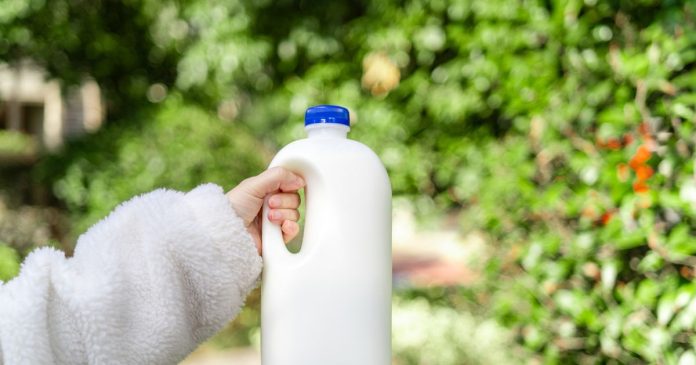When milk spoils, it turns into a thick yogurt-like substance that begins to smell unpleasant. However, there is actually a use for gone-off milk, so don’t pour it away just yet—it can benefit your garden.
Now that we’re in spring, it’s time to start tending to the garden again, and the Royal Horticultural Society estimates that 30 million Brits will be gardening this year. To prepare for the new season, experts recommend using spoiled milk as an excellent way to help grow your plants.
Spoiled milk is a fantastic compost ingredient. It contains calcium, nitrogen, and phosphorus, all of which are essential compounds for plant growth. The calcium also helps prevent blossom-end rot, which causes dark patches on the underside of vegetables like aubergines.
Every year, 490,000 tonnes of milk are thrown away in the UK, according to the Waste Mission, making it an ideal way to reduce waste. By using it on your plants, you’re not only helping them thrive but also making a significant contribution to the planet.
The reason spoiled milk is preferable to fresh milk is that adding fresh milk, which hasn’t broken down yet, can be quite messy. Since spoiled milk is an organic material, it won’t attract unwanted bugs or mould while it decomposes, and you won’t create an unpleasant smell in your garden.
For the best way to use spoiled milk in your garden, The Greenwashing Index advises: “Just mix it into the soil around plants. Milk also makes an excellent preventative spray against powdery mildew—simply dilute it, using one part milk to ten parts water, then apply it over the surface of the leaves.”
It’s also important never to pour undiluted milk directly onto plants or into the soil, as it can harm them. It’s best to mix milk with water, aiming for a 50/50 ratio.
Another spoiled ingredient you can use is flour. Leafy crops like spinach, kale, and lettuce can benefit from this, according to The Greenwashing Index. Flour contains nitrogen and other important micronutrients, such as calcium, making it an unlikely but ideal soil enhancer.
The best time to use flour is before your crops begin to grow. It can be added directly to the soil or to your compost bin. The experts recommend: “Lightly dust stale flour over the soil a few weeks before planting, or simply add it in thin layers to your compost heap.”
At Reach and across our entities we and our partners use information collected through cookies and other identifiers from your device to improve experience on our site, analyse how it is used and to show personalised advertising. You can opt out of the sale or sharing of your data, at any time clicking the “Do Not Sell or Share my Data” button at the bottom of the webpage. Please note that your preferences are browser specific. Use of our website and any of our services represents your acceptance of the use of cookies and consent to the practices described in our Privacy Notice and Cookie Notice.


